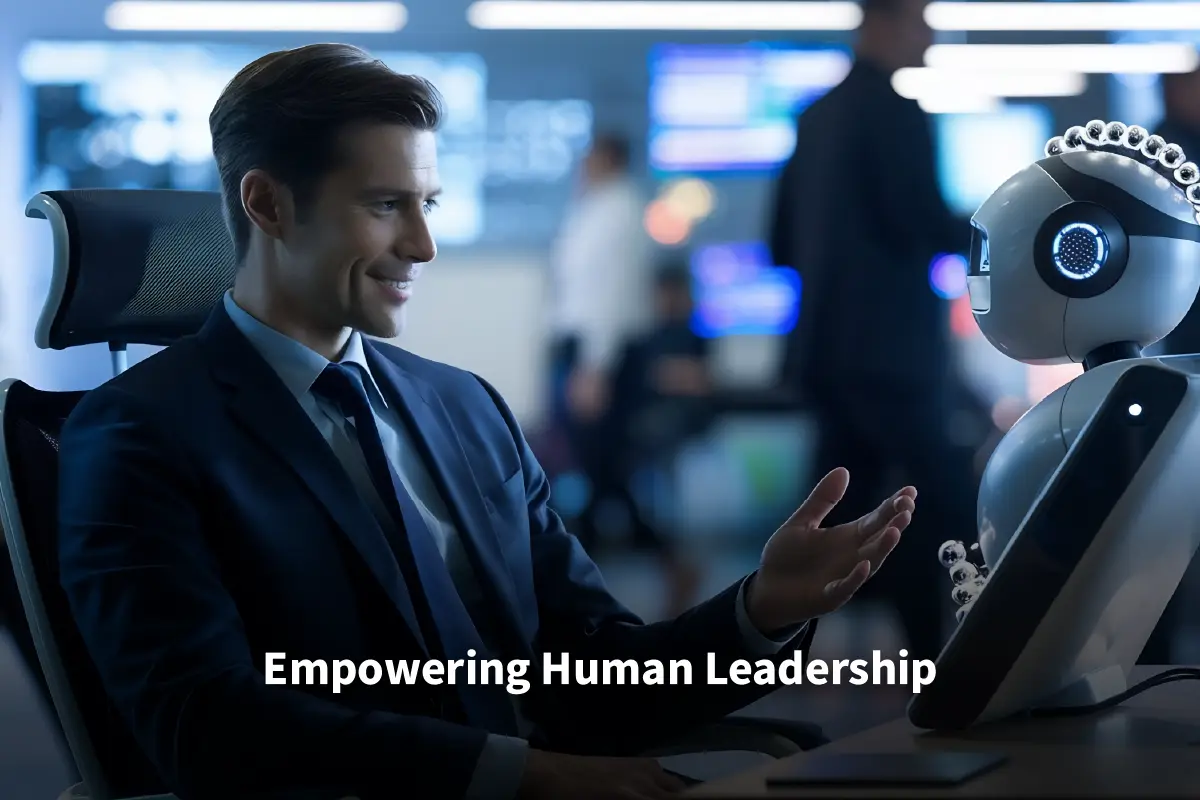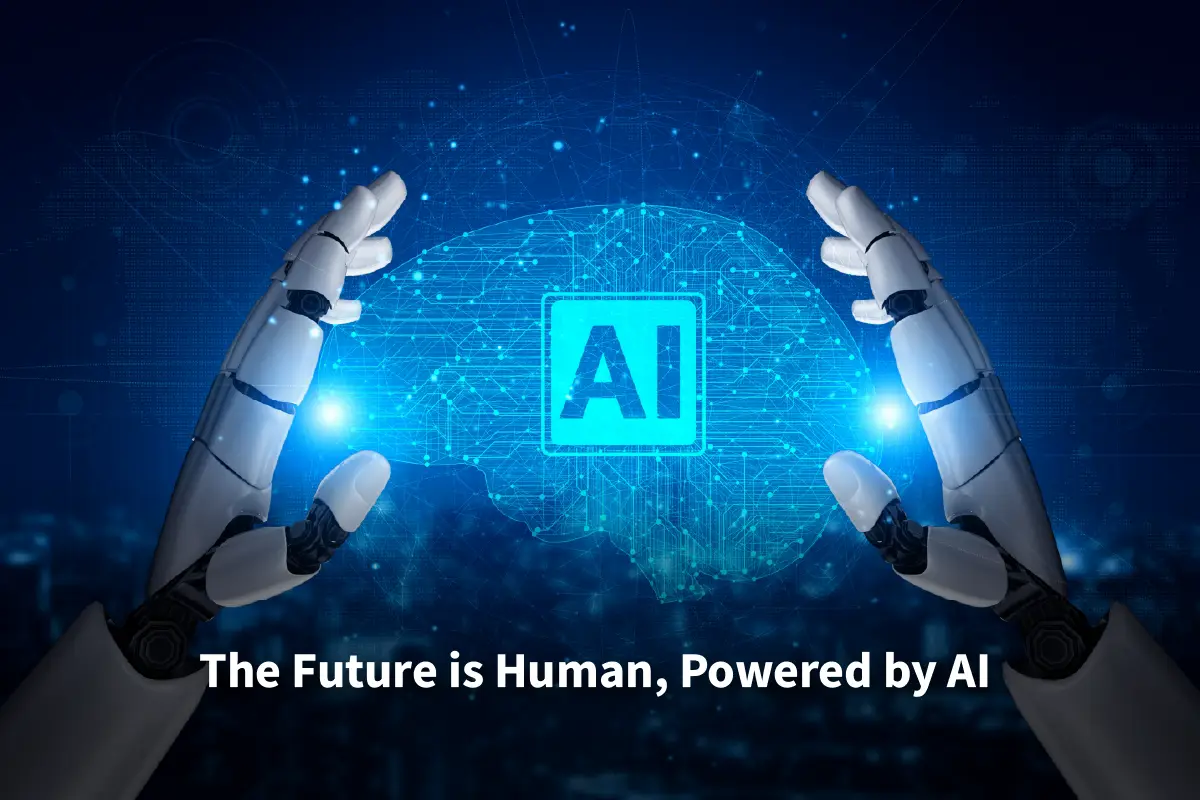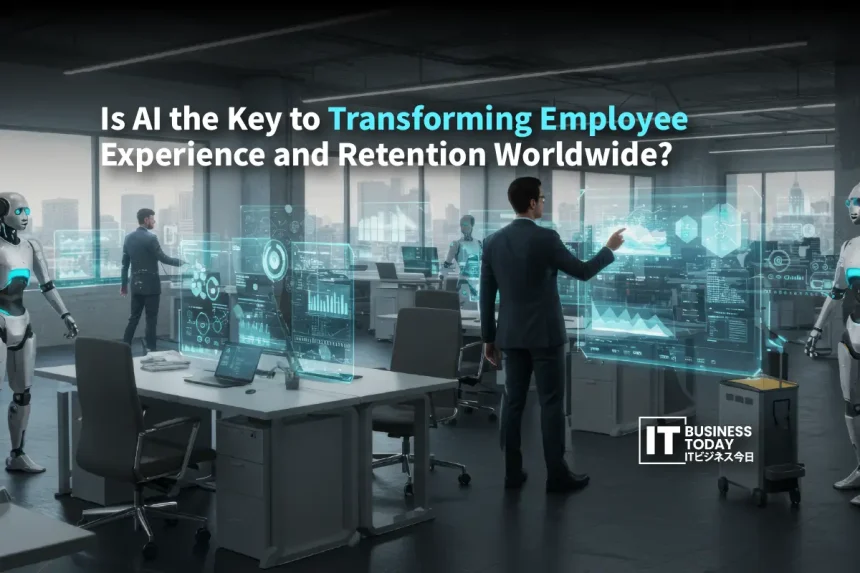The global business landscape is in the throes of a silent revolution. Boardrooms buzz with talk of digital transformation, supply chain strength, and market reach. A bigger challenge is the human factor. It can weaken all strategies. Employee disengagement and turnover are now issues for everyone, not just HR. They have become a serious economic crisis. Gallup estimates that disengaged employees cost the world nearly US$ 8.8 trillion annually, about 9% of global GDP, in lost productivity, rehiring, and lost knowledge. For years, the solutions offered have been well-meaning but often shallow. We see another annual survey, a new perks program, or a generic career path. These are tools from the twentieth century. They don’t meet the needs of today’s workforce. A new, powerful ally is emerging from the digital world. It won’t replace human connection; instead, it will enhance it. That ally is artificial intelligence.
The question now isn’t if AI will change business operations. It’s about improving the employee experience and addressing retention issues. For smart business leaders, the answer is simple: AI isn’t just a key; it’s the top locksmith. It creates workspaces that are tailored, forward-thinking, and centered on people.
The New Mandate for Experience
Let’s be unequivocally clear. The modern employee experience isn’t just about free snacks or a stylish office. These are table stakes, and rather low ones at that. True experience covers all the feelings an employee has when interacting with your organization. This starts with their first look at a job description and ends with their exit interview.
Their daily work includes:
- the tools they use
- clear goals
- quality feedback
- a sense of growth and belonging
- a feeling that their well-being matters.
Also Read: Securing the Smart Nation: Japan’s Push Toward SASE and Next-Gen Network Resilience
Traditional HR systems often get bogged down by admin tasks and manual processes. They struggle to handle this complexity. They rely on hindsight. They give lagging indicators only after a top performer has left. This reactive approach is a primary reason why retention efforts so often feel like plugging holes in a sinking ship. AI flips this model on its head. It moves from reactive to proactive, from generic to personal, and from administrative to strategic. It helps leaders go from guesswork to data-driven empathy.
Crafting a Unique Journey for Every Employee
The best way AI is used in the employee lifecycle is through personalization. Customer experiences must fit individual preferences. Now, let’s offer the same respect to our team. AI algorithms can analyze large datasets. They examine work patterns, project contributions, completed learning modules, and calendar data. This creates a unique digital fingerprint for each employee.
This feature lets you create a custom work experience. Imagine a system that suggests projects aligned with your career goals and unique skills. It acts like an internal talent scout. It helps you discover the right opportunities. Imagine an AI-driven learning platform. It doesn’t provide a standard catalog. It provides micro-learning content that focuses on specific skill gaps seen in recent project reviews. It’s like having a personal tutor. This is the opposite of a typical corporate mandate. It’s a co-created career path based on data and a focus on personal growth. This is no longer theory: research shows that 92% of companies plan to increase AI investment in HR within the next three years, and 80% of organizations will integrate AI into HR workflows by 2025. Employees are noticing too, 70% will expect AI-driven personalized career development plans as the new standard.
When employees feel valued, they connect more with the company. This turns a job into a journey.
From Exit Interviews to Retention Interventions
AI’s most transformative power might be its ability to predict. AI can spot who might leave a company by analyzing their behavior. Instead of exit interviews, it helps to find out why they might want to leave. AI can spot potential flight risks by noticing small signs. These signs include fewer calendar events, shifts in email tone, reduced participation in important meetings, or changes in work hours. It can achieve this with surprising accuracy, even before a resignation letter is written.
Studies reveal that 78% of employee departures are preventable with timely intervention. IBM has taken this even further with an AI attrition model that achieved 95% accuracy in predicting who was likely to leave. These insights transform managers from passive supervisors into active coaches.
But identification is only half the battle. The true value is in the intervention. These systems give managers useful insights and clear steps to take. An alert might read, ‘This high-potential employee hasn’t had mentorship in 90 days. Their input on projects involving multiple departments has decreased a lot. Recommended action: Have a career development chat. Also, look into chances with the new innovation task force.’ This changes a manager from a passive supervisor to an active coach. Now, they know how to prevent attrition instead of just reacting to it. It turns a sudden, hard goodbye into a strong, valuable connection.
Empowering Human Leadership

Many worry that AI will take away the human touch at work or even replace managers. The opposite is true. AI’s key role is to support human leadership, not replace it. The modern manager often feels overwhelmed. They handle admin tasks, manage project timelines, and support team growth. AI serves as a strong co-pilot. It automates tasks. It also highlights important human insights.
An AI tool can check team feelings in real-time. It captures the emotional tone of meeting notes or messages. This helps managers see how their team feels. It can automate the tedious job of writing performance review summaries. This saves managers time. They can have more meaningful; in-person talks. It helps leaders notice every employee. They can celebrate achievements. They can check on well-being. They can also share opportunities fairly. AI takes care of data crunching. This allows leaders to focus on their strengths: leading with empathy, inspiration, and vision.
Fostering Inclusion and Eliminating Bias
Unconscious bias is a big barrier to a positive employee experience. It can limit diversity and slow down fair advancement. Ethical AI can help create a fairer playing field. It can check job descriptions for biased language. This helps attract a wider and more diverse group of candidates. AI can analyze feedback in performance evaluations. It searches for subjective language. This helps managers provide more objective, evidence-based assessments.
AI can examine promotion and pay data throughout the company. This helps find gaps that people may overlook. Leadership can tackle inequities early. This helps avoid bigger problems down the line. This creates a fair and open culture. Employees believe their growth is based on merit and contribution. Fairness is key for keeping employees and ensuring the organization’s well-being. The impact is already visible: 62% of companies report improved candidate experience through AI-powered recruiting tools, 52% say AI has enhanced employee engagement, and 65% report improved personalization of training programs.
Navigating the Ethical Imperative
To harness AI’s potential, we must first navigate its perils. The use of employee data is a privilege, not a right. Transparency is non-negotiable. Employees need to know what data is collected. They should also understand how it’s used and why it helps them. The goal is empowerment, not surveillance. Using AI as a ‘big brother’ tool to track keystrokes or boost productivity will quickly erode trust. The architecture requires a strong foundation in data security and strict governance. This makes sure algorithms are often checked for fairness and accuracy. The human resources department must become a steward of this ethical framework. Technology should serve humanity, not the other way around.
The Future is Human, Powered by AI

Employee experience is a journey, not a destination. AI is the most powerful vehicle we have ever had to navigate it. It helps us understand our people like never before. We can act before problems show up. Plus, it scales to offer a truly human-centered experience to everyone in a global organization.
The key to worldwide employee retention is not a mystery. It’s always been about building connections, finding purpose, and encouraging growth. For decades, we lacked the tools to do this systematically. We relied on intuition and infrequent surveys. Today, AI provides a clear picture. It makes the employee journey clear and effective. Business leaders who succeed in the talent war will embrace this synergy. View artificial intelligence as a powerful tool, not merely a soulless machine. It enhances human potential at work. The future of work is not automated; it is augmented, and it is profoundly human.







